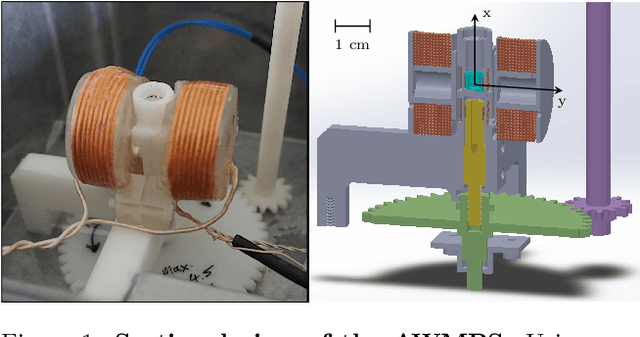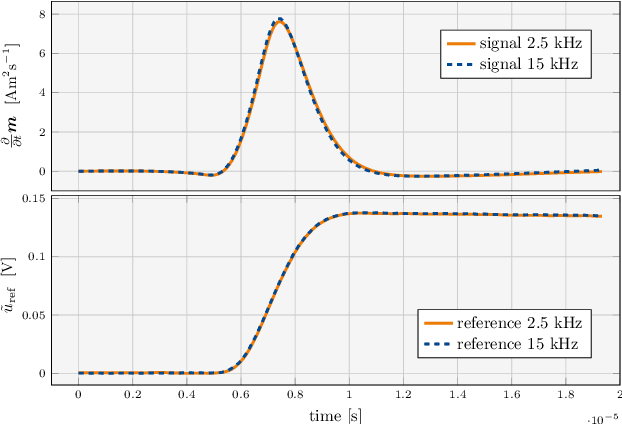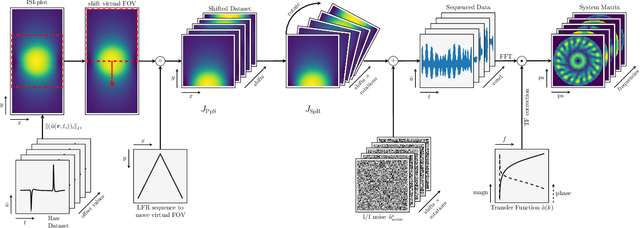Fabian Mohn
Low-cost analog signal chain for transmit-receive circuits of passive induction-based resonators
Feb 05, 2025


Abstract:Passive wireless sensors are crucial in modern medical and industrial settings to monitor procedures and conditions. We demonstrate a circuit to inductively excite passive resonators and to conduct their decaying signal response to a low noise amplifier. Two design variations of a generic transmit-receive signal chain are proposed, measured, and described in detail for the purpose of facilitating replication. Instrumentation and design aim to be scalable for multi-channel array configurations, using either off-the-shelf class-D audio amplifiers or a custom full H-bridge. Measurements are conducted on miniature magneto-mechanical resonators in the ultra low frequency range to enable sensing and tracking applications of such devices in different environments.
Resonant Inductive Coupling Network for Human-Sized Magnetic Particle Imaging
Dec 23, 2023Abstract:In Magnetic Particle Imaging, a field-free region is maneuvered throughout the field of view using a time-varying magnetic field known as the drive-field. Human-sized systems operate the drive-field in the kHz range and generate it by utilizing strong currents that can rise to the kA range within a coil called the drive field generator. Matching and tuning between a power amplifier, a band-pass filter and the drive-field generator is required. Here, for reasons of safety in future human scanners, a symmetrical topology and a transformer, called inductive coupling network is used. Our primary objectives are to achieve floating potentials to ensure patient safety, attaining high linearity and high gain for the resonant transformer. We present a novel systematic approach to the design of a loss-optimized resonant toroid with a D-shaped cross section, employing segmentation to adjust the inductance-to-resistance ratio while maintaining a constant quality factor. Simultaneously, we derive a specific matching condition of a symmetric transmit-receive circuit for magnetic particle imaging. The chosen setup filters the fundamental frequency and allows simultaneous signal transmission and reception. In addition, the decoupling of multiple drive field channels is discussed and the primary side of the transformer is evaluated for maximum coupling and minimum stray field. Two prototypes were constructed, measured, decoupled, and compared to the derived theory and to method-of-moment based simulations.
System Matrix based Reconstruction for Pulsed Sequences in Magnetic Particle Imaging
Aug 23, 2021



Abstract:Improving resolution and sensitivity will widen possible medical applications of magnetic particle imaging in its clinical application. Pulsed excitation promises such benefits, at the cost of more complex hardware solutions and restrictions on drive field amplitude and frequency. In this work, a sequence is proposed, that combines high drive-field amplitudes and high frequency rectangular excitation. State of the art systems utilize a sinusoidal excitation to drive superparamagnetic nanoparticles into the non-linear part of their magnetization curve, which creates a spectrum with a clear separation of direct feed-through and higher harmonics caused by the particles response. One challenge for rectangular excitation is the discrimination of particle and excitation signals, both broad-band. Another is the drive-field sequence itself, as particles that are not placed at the same spatial position, may react simultaneously and are not separable by their signals phase or signal shape. This loss of information in spatial encoding is overcome in this work by utilizing a superposition of shifting fields and drive-field rotations. The software framework developed for this work processes measured data from an Arbitrary Waveform Magnetic Particle Spectrometer, which is calibrated to guarantee device independence. Multiple sequence types and waveforms are compared, based on frequency space image reconstruction from emulated signals, that are derived from these measured particle responses. A resolution of 1.0 mT (0.8 mm for a gradient of (-1.25,-1.25,2.5) T/m) in x- and y-direction was achieved and a superior sensitivity was detected on the basis of reference phantoms for the proposed sequence in this work.
 Add to Chrome
Add to Chrome Add to Firefox
Add to Firefox Add to Edge
Add to Edge